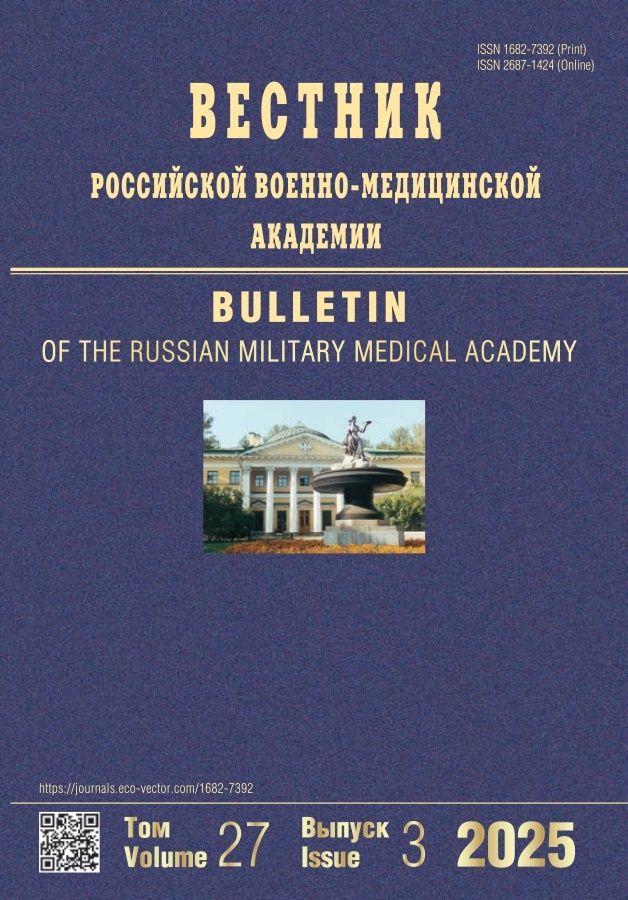Варианты уровня формирования и ветвления общего малоберцового нерва
- Авторы: Исаев ДМ1, Гайворонский АИ1, Гайворонский ИВ1, Горячева ИА1
-
Учреждения:
- Военно-медицинская академия им. С.М. Кирова
- Выпуск: Том 21, № 2 (2019)
- Страницы: 160-165
- Раздел: Статьи
- URL: https://journals.rcsi.science/1682-7392/article/view/25937
- DOI: https://doi.org/10.17816/brmma25937
- ID: 25937
Цитировать
Полный текст
Аннотация
Полный текст
Открыть статью на сайте журналаОб авторах
Д М Исаев
Военно-медицинская академия им. С.М. Кирова
Email: vmeda-nio@mil.ru
Санкт-Петербург
А И Гайворонский
Военно-медицинская академия им. С.М. Кирова
Email: vmeda-nio@mil.ru
Санкт-Петербург
И В Гайворонский
Военно-медицинская академия им. С.М. Кирова
Email: vmeda-nio@mil.ru
Санкт-Петербург
И А Горячева
Военно-медицинская академия им. С.М. Кирова
Email: vmeda-nio@mil.ru
Санкт-Петербург
Список литературы
- Вишневский, А.С. Атлас периферической нервной и венозной систем / А.С. Вишневский, А.Н. Максименков. - М.: Медгиз, 1949. - 109 с.
- Гайворонский, И.В. Анатомия и физиология человека. - И.В. Гайворонский, Г.И. Ничипорук, А.И. Гайворонский. - СПб.: Академия, 2007. - 423 с.
- Говенько, Ф.С. Хирургия повреждений периферических нервов / Ф.С. Говенько. - СПб.: Феникс, 2010. - С. 144-155.
- Журбин, Е.А. Возможности ультразвукового исследования при травматических повреждениях периферических нервов конечностей / Е.А. Журбин [и др.] // Росс. электрон. журн. лучевой диагностики. - 2017. - Т. 7, № 3. - С. 127-135.
- Калмин, О.В. Сравнительная характеристика внутриствольного строения большеберцового и общего малоберцового нервов в зрелом возрасте / О.В. Калмин, И.В. Паткина // Вестн. новых мед. технол. - 2007. - Т. 14. - №. 3. - С. 38-40.
- Нугайбекова, Г.А. Клинические варианты синдрома малоберцового нерва: автореф. дис… канд. мед. наук / Г.А. Нугайбекова. - Казань, 2003. - 128 с.
- Патент № 2182766 Российская Федерация, МПК-7 А01N1/00 Способ бальзамирования анатомических препаратов силоксановыми композициями / С.П. Григорян, Д.А. Старчик, И.В. Гайворонский. - Опубл. 27.05.2002, РФ. - 2002. - С. 36-39.
- Паткина, И.В. Макро-микроскопическая анатомия и деформативно-прочностные свойства большеберцового и общего малоберцового нервов взрослых людей: автореф. дис.. канд. мед. наук / И.В. Паткина. - Саратов, 2008. - 148 с.
- Шевелев, И.Н. Микрохирургия периферических нервов / И.Н. Шевелев. - М., 2011. - 113 с.
- Eser, F. Etiological factors of traumatic peripheral nerve injuries / Eser F. [et al.] // Neurology India. - 2009. - Vol. 57, № 4. - 434 c.
- Rosenow, D.E. Superficial peroneal nerve / D.E. Rosenow // Journal of neurosurgery. - 2007. - Vol. 106, № 3. - С. 520-522.
- Seidel, J.A. Surgical treatment of traumatic peroneal nerve lesions / J.A. Seidel [et al.] // Neurosurgery. - 2008. - Vol. 62, № 3. - С. 664-673.
- Sunderland, S. The cross-sectional area of peripheral nerve trunks devoted to nerve fibres S. Sunderland, K.C. Bradley // Brain. - 1949. - Vol. 72, № 3. - С. 428-449.
Дополнительные файлы







